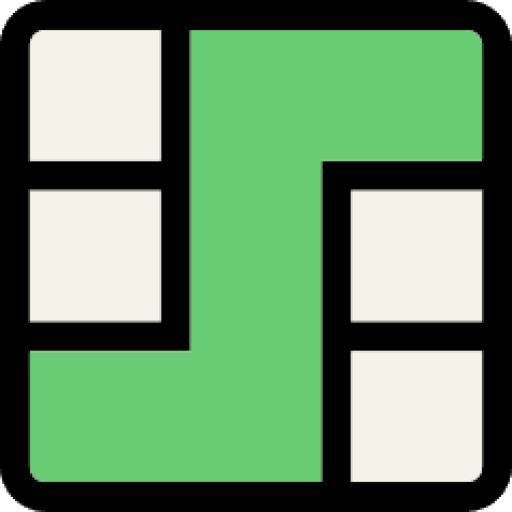Squares
Step into the timeless battlefield of logic and strategy with Squares, the iconic grid-based game that transforms simple dots into a war of wits. Easy to learn, impossible to master—this classic duel challenges players to outthink, outmaneuver, and outscore their opponents by claiming boxes one line at a time.
Dating back to the 19th century and refined by mathematicians, Squares is more than a game—it’s a cerebral showdown. Each move demands foresight, precision, and psychological edge. Whether you’re playing on paper or dominating digital grids, every match is a dance of control, chain reactions, and game theory brilliance.
🎲 No luck. Just pure strategy. Ready to draw the line between victory and defeat? The grid awaits. Claim your space.
Play Other Games

Block Blast
Place blocks, clear rows, and score points!

Sudoku
Solve a 9×9 Sudoku grid

Numberle
Math game like Wordle
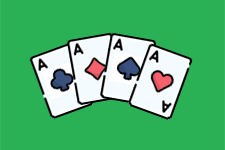
Solitaire
Play Classic Solitaire
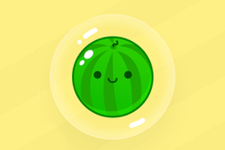
Watermelon Game
Merge fruits in a box

Snake game
Play Google 🐍 Snake

Dinosaur game
Play Google 🦕 Dinosaur

Flappy Bird
Classic Flappy bird game
Squares Game Free to Play Online – No Ads & No Download Needed
Feeling the need for a mental escape that’s both calming and challenging? If you’re looking for a way to sharpen your focus, relax your mind, and enjoy a dose of classic puzzle nostalgia, you’ve come to the right place. This guide introduces Squares, an elegant online puzzle game that blends simple rules with deep strategic thinking. It’s designed for anyone who loves the quiet satisfaction of solving a logical challenge.
Squares is a completely free, ad-free, and browser-based game, meaning you can play instantly without downloads, sign-ups, or interruptions. It’s a return to the pure, distraction-free gameplay that many of us remember from the early days of PC gaming. Whether you’re a fan of Sudoku, Solitaire, or Wordle, Squares offers a unique way to train your brain and unwind.
In this guide, you’ll discover:
- The simple rules and objective of the game.
- A step-by-step tutorial to make your first move with confidence.
- Core strategies to help you improve and master the grid.
- The cognitive and emotional benefits of engaging in this mindful puzzle.
Understanding the Squares Game
Before you make your first move, it’s helpful to understand the core concepts of Squares. Unlike games that rely on speed or luck, Squares is all about logic, planning, and spatial reasoning. Its clean design and intuitive mechanics make it easy to learn, but the underlying strategy provides a lasting challenge that keeps you coming back.
A Quick Overview of Squares
At its heart, Squares is a logic grid-based puzzle where the goal is to strategically complete boxes on a grid of dots. While its exact digital origins are spread across many early computer systems, it’s a modern take on the classic pen-and-paper game known as “Dots and Boxes,” which dates back to the 19th century. The game’s enduring appeal lies in its simplicity and the surprising depth of its strategy.
It shares DNA with other beloved logic puzzles but offers a distinct experience. While Sudoku challenges your numerical deduction and Wordle tests your vocabulary, Squares focuses on your ability to anticipate outcomes and control territory.
| Game | Type | Skill Used | Pace | Ads |
|---|---|---|---|---|
| Squares | Logic Grid | Strategy, Planning | Calm | None |
| Sudoku | Numbers | Logic, Deduction | Medium | Often |
| Wordle | Words | Language, Memory | Fast | None |
Purpose and Rules of the Game
The beauty of Squares is its straightforward rule set. You don’t need to learn complex combinations or memorize a long list of instructions. The entire game revolves around a single, simple action with profound strategic consequences.
Objective
The primary objective in Squares is to claim more boxes than your opponent by the time the entire grid is filled. You claim a box by drawing the fourth and final line that encloses a 1×1 square. The player who has captured the most squares at the end of the game wins.

A clean, minimalist diagram of the Squares game board, showing a grid of dots with a few lines already drawn. Highlight one completed square with a player’s color inside to clearly illustrate the objective. | Alt Text: A diagram showing the objective of the Squares game: to complete a 1×1 box by drawing the final line.
Gameplay Basics
A game of Squares is played by two opponents taking turns connecting dots on the grid. Here’s how a typical turn works:
- The Grid: The game begins with an empty grid of dots.
- Taking a Turn: On your turn, you select any two adjacent dots—horizontally or vertically—and draw a line between them.
- Completing a Square: If the line you draw is the fourth wall of a 1×1 box, that box is now yours! It will be filled with your color.
- The Bonus Turn: When you complete a square, you must take another turn immediately. You can continue taking bonus turns as long as you keep completing squares. This is the key to creating long, game-winning chains.
- Ending the Game: The game ends when every dot on the grid has been connected and no more lines can be drawn. The player with the most colored squares wins.
Common Beginner Mistakes
New players often make a few predictable errors. Avoiding them is the first step toward building a winning strategy.
- Making Random Moves: Placing lines without a purpose early in the game can unintentionally create opportunities for your opponent. Fix: Always think one or two moves ahead and avoid giving away easy squares.
- Ignoring Chains: The most common mistake is failing to see how completing one square can lead to a long chain of captures for your opponent. Fix: Count the number of available lines in any given section before making a move that could hand over control.
- Focusing Only on Offense: It’s tempting to only look for squares to complete. However, defensive playing—forcing your opponent into bad moves—is just as important. Fix: Sometimes, the best move is one that doesn’t complete a square but limits your opponent’s options.
How to Play Squares – Step-by-Step Tutorial
Ready to jump in? This section will walk you through everything you need to know to start your first game with confidence. From accessing the game to understanding the flow of a round, you’ll be playing like a pro in no time.
Getting Started
One of the best features of Squares is its accessibility. There are no barriers to entry, allowing you to start playing in seconds.
- Accessing the Game: Simply open your web browser. There is nothing to download or install.
- No Login Required: You can play immediately without creating an account or providing any personal information.
- Device Compatibility: The game is designed to work seamlessly on desktops, tablets, and mobile phones, so you can enjoy a mental workout wherever you are.

A screenshot of the Squares game landing page. A cursor or finger icon is hovering over the “Play Now” button to clearly guide the user. The design is clean and inviting. | Alt Text: The starting screen for the Squares online game, with a prominent “Play Now” button.
Step-by-Step Gameplay Guide
Follow these four steps to navigate your first game from start to finish.
- Understanding the Board: When you start, you’ll see a grid of dots. The space between any two adjacent dots is a potential line. The game board will also display the score—showing how many squares you and your opponent (the computer) have claimed. The player whose turn it is will be clearly indicated.
- Making Your First Move; To draw a line, simply click or tap in the empty space between two dots. A line will appear. In the early game, your goal is to add lines without creating the third side of any potential square. Doing so would give your opponent an easy opportunity to complete it and claim the box.
- Building Strategy: Your early choices matter. Try to claim territory by creating long chains of connected lines that don’t give away squares. The core of Squares strategy is about sacrifice. You will eventually be forced to draw the third side of a square. The key is to do so in an area where your opponent can only claim one or two squares, rather than a long, game-ending chain.
- Finishing a Round: The game ends when all possible lines on the grid have been drawn. At this point, the entire board will be filled with colored squares. The final scores are tallied, and the player with the majority of squares is declared the winner. You can then choose to play again, perhaps on a larger grid for a greater challenge.
Example Gameplay Session (Walkthrough)
Let’s walk through the first few moves of a game to see these principles in action.
Phase 1: The Opening
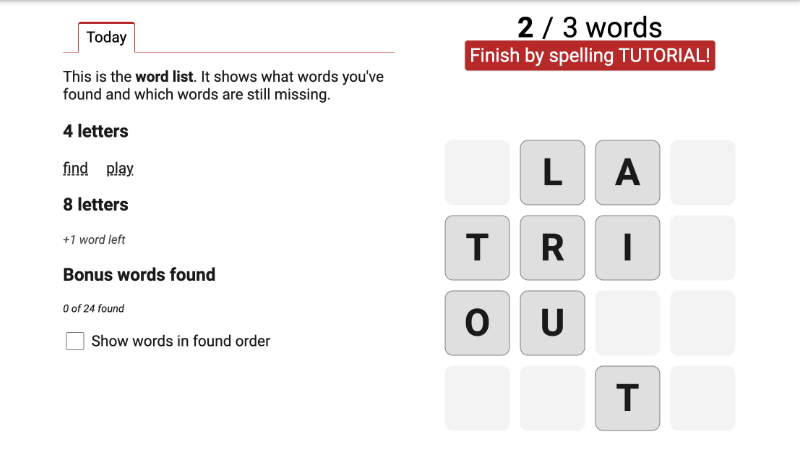
An animated GIF showing the first 4-6 moves of a Squares game. The moves are slow and deliberate, showing both players adding lines in different parts of the grid without creating any three-sided boxes. | Alt Text: An animation of the opening moves in a game of Squares.
- My First Move: I start by placing a line in the middle of the board. Central control can be useful, but more importantly, it’s a safe move that doesn’t create any immediate threats.
- The Opponent’s Move: The computer responds by placing a line in a different section. We are both currently “claiming” space without setting the other up.
- My Goal: My objective in this phase is to avoid being the first to create a three-sided box. I continue adding lines to sections that are wide open. I chose this move because it connects to my first line but still leaves no easy captures for my opponent.
Phase 2: The First Sacrifice
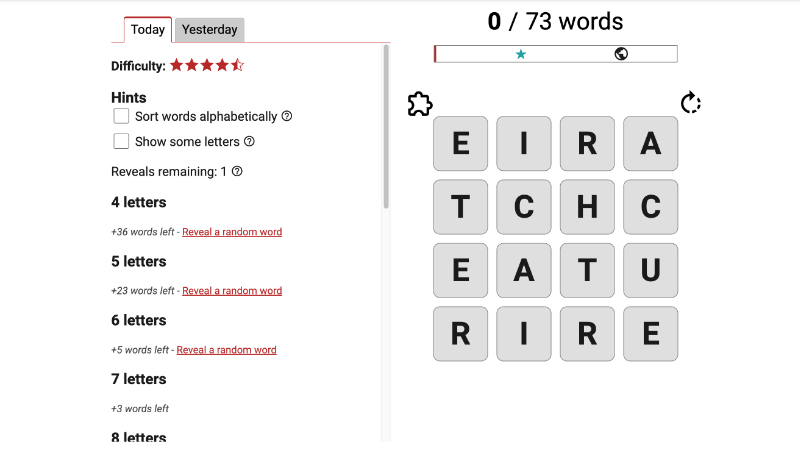
A static image of the Squares board mid-game. Circle a specific area where one player is forced to draw the third side of a box, setting up the opponent. Use arrows to show the chain reaction that will follow. | Alt Text: A mid-game screenshot of Squares highlighting a forced move that will lead to the opponent capturing a chain of squares.
- The Inevitable Move: After several turns, most of the “safe” moves are gone. I am now forced to draw a line that forms the third side of a box.
- Strategic Thinking: Before I make the move, I count the potential squares my opponent will get. I see a section where I can give them just two squares. I avoid another section where they could start a chain of five. I chose this move because it minimizes the damage and hands over the fewest possible points.
- The Opponent’s Turn: As expected, the computer completes the first square, then the second. Because the chain ends there, the turn passes back to me. Now it’s my turn to look for chains.
Strategies and Tips to Master Squares
Once you’re comfortable with the basics, you can start thinking more deeply about strategy. Mastering Squares is about shifting your perspective from simply drawing lines to seeing patterns, anticipating moves, and controlling the flow of the game.
Core Logic Strategies
Winning consistently in Squares requires a few key mental skills. Focus on developing these habits, and you’ll see a dramatic improvement in your gameplay.
- Pattern Recognition: The game board is full of repeating patterns. The most important is the chain. A chain is a series of connected potential squares, each needing only two more lines to be completed. Recognizing these is crucial. Before you make a move that gives your opponent a square, quickly count how many squares in the connected chain you are handing over. The goal is to force your opponent to open a long chain for you.
- Anticipating Opponent Moves: Always think about what your opponent will do in response to your move. If you draw a line, where will they draw theirs? Good strategy involves sacrificing a small number of squares to gain control of a much larger chain. For example, you might voluntarily give your opponent a 2-square chain if you know that their final move will force them to open up a 10-square chain for you to capture.
- Space Optimization: In the early game, try to distribute your lines evenly across the board. Don’t focus all your attention on one corner. This keeps your options open and prevents your opponent from easily walling off a large section of the grid for themselves. The player who can more effectively manage empty space often dictates the pace of the mid-to-late game.
Advanced Techniques
Ready to take your skills to the next level? These techniques focus on efficiency and psychological momentum.
Playing Efficiently (Time Management)
While Squares is a calm game, thinking efficiently helps maintain focus.
- The 2-Second Scan: Before each move, do a quick scan for any three-sided boxes. This prevents you from accidentally giving away a free square.
- Count the Chains: When you have to make a sacrifice, quickly count the length of the available chains. Always choose the sacrifice that leads to the shortest chain for your opponent.
- Accuracy Over Speed: Rushing leads to mistakes. It’s better to take a few extra seconds to verify your move than to hand over a long chain accidentally.
Winning Streak Patterns
Concentration is key. When you’re in a “flow state,” you start to see the board more clearly. If you win a game, carry that momentum into the next one. Notice the strategies that led to your win. Was it a clever sacrifice? Did you successfully control the center of the board? Repeating successful patterns helps build strong mental models for future games.
Mistakes to Avoid (with examples)
Even advanced players can fall into bad habits. Here’s a quick guide to common traps and how to sidestep them.
| Mistake | What Happens | Fix |
|---|---|---|
| Focusing on corners | You lose control of the center and give your opponent more options to build long chains. | Start your moves near the middle of the grid and expand outward. |
| Rushing moves | You miss opportunities to force your opponent into a bad position or fail to see a trap. | Take a brief pause before every move, especially in the late game. |
| Ignoring symmetry | You may create an imbalance on the board that your opponent can exploit. | Try to build your lines symmetrically to keep the game balanced and predictable. |
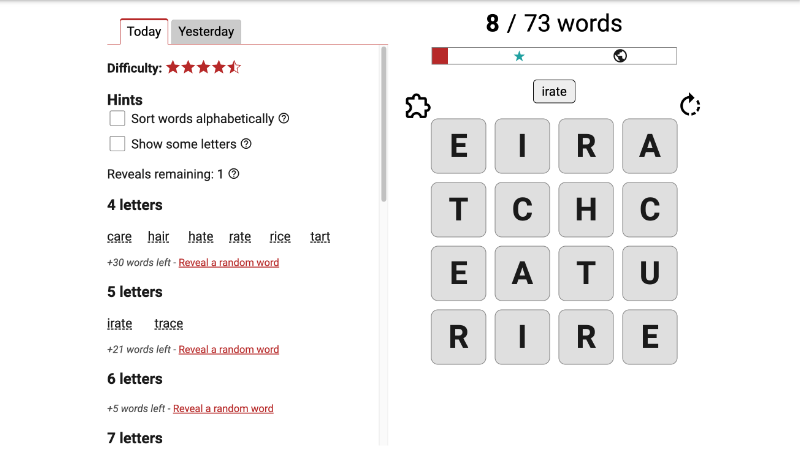
Why People Love Squares – Cognitive and Emotional Benefits
Beyond being a fun way to pass the time, playing Squares offers tangible benefits for your mental and emotional well-being. Engaging with logic puzzles is like a workout for your brain, helping to keep it sharp and resilient. At the same time, the calm, focused nature of the game provides a welcome escape from the stresses of daily life.
The Mind Benefits of Playing Squares
Engaging in strategic thinking has been shown to have positive effects on cognitive function. While you play Squares, you are actively training several key mental skills:
- Working Memory: You have to hold the state of the board in your mind as you plan future moves and anticipate your opponent’s responses.
- Focus and Concentration: The need to pay attention to patterns and potential chains hones your ability to concentrate on a single task, a skill that is increasingly valuable in a world full of distractions.
- Patience and Foresight: Squares teaches you the value of patience. Rushing leads to errors, while thoughtful planning and waiting for the right opportunity lead to victory.
The game also provides powerful emotional benefits. The gentle, predictable rhythm of turn-based play can be incredibly calming, helping you achieve a mindful “flow state.” In this state, you are fully immersed in the activity, your mind is clear of anxieties, and time seems to pass effortlessly.
Squares vs. Other Puzzle Games
Different puzzles exercise different parts of your brain and offer unique emotional rewards. Here’s how Squares compares to other popular games in terms of its cognitive impact.
| Game | Focus Type | Emotional Benefit | Best For |
|---|---|---|---|
| Squares | Spatial-Logic, Planning | Calm Focus, Patience | A relaxing daily mental routine. |
| Sudoku | Numeric Logic, Deduction | Confidence, Orderliness | Analytical thinkers who love completion. |
| Wordle | Verbal Logic, Memory | Quick Satisfaction, Social Fun | A fast-paced morning brain warm-up. |
Personal Reflection / Expert Insight
As a long-time puzzle enthusiast, I find myself returning to Squares again and again. There’s a quiet elegance to it that other games lack. After playing about 20 games, I noticed my thinking became more structured. I started looking for cause and effect in different areas of my life, much like I would analyze a chain of moves on the grid. It’s more than just a game; it’s a practice in mindfulness and strategic thinking that brings a sense of order and calm to my day.
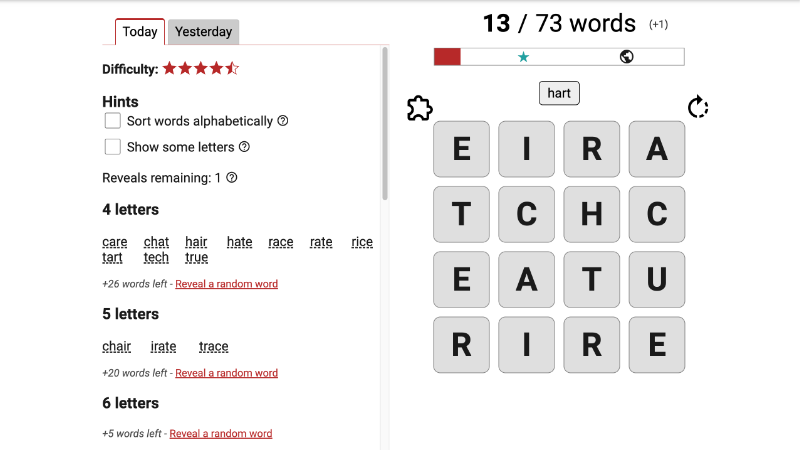
Play Squares Now – Your Turn!
You now have the rules, strategies, and insights to master this timeless puzzle. The best way to truly appreciate the simple genius of Squares is to experience it for yourself. It’s time to put your new knowledge to the test and enjoy a few rounds of this relaxing and rewarding game.
Challenge yourself, train your brain, and rediscover the joy of pure, strategic fun. Bookmark the page to make it your new daily mental exercise, and feel free to share it with friends who also appreciate a good puzzle.
…more
Rate Squares:
4.8 / 54,760 votes
